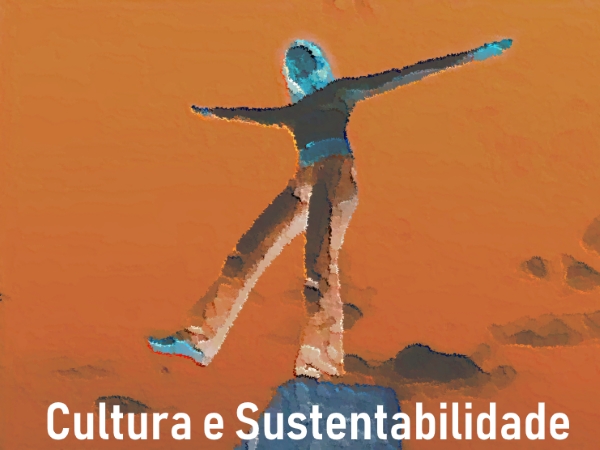Papel da regulação gênica na ação de enzimas lignocelulolíticas
Palavras-chave:
fatores de transcrição, etanol 2G, fungos filamentososResumo
O etanol de segunda geração (2G), produzido a partir de resíduos de biomassa vegetal, como palha de arroz e bagaço de cana de açúcar, são alternativas promissoras para aumentar a contribuição dos biocombustíveis na matriz energética global. A eficiente utilização de fontes alternativas de carbono requer um consórcio enzimático altamente específico, composto, principalmente, por celulases e hemicelulases. O alto custo da hidrólise enzimática, associado a um processo de produção deficiente, torna o etanol de 2G pouco competitivo economicamente com as fontes tradicionais de energia. Fungos filamentosos destacam-se como organismos produtores de enzimas lignocelulolíticas, sendo alvos em pesquisas biotecnológicas para melhoramento de linhagens capazes de aumentar a produção de enzimas. Uma forma para aumentar a produção de complexos enzimáticos é a manipulação da expressão gênica das enzimas de interesse, podendo ocorrer a nível transcricional. Os fatores de transcrição (TF’s) são elementos que atuam na repressão ou ativação de genes. Visto isso, a regulação dos fatores de transcrição, ao invés do gene alvo, é uma estratégia eficiente e promissora para melhoria dos coquetéis enzimáticos produzidos por fungos filamentosos. Neste sentido, a finalidade deste trabalho foi realizar uma revisão didática sobre a atuação dos fatores de transcrição na regulação gênica de enzimas lignocelulolíticas em fungos. A potencialização da expressão gênica e a otimização da produção enzimática, podem tornar mais acessível o processo de hidrólise enzimática da biomassa vegetal permitindo uma amplificação da contribuição do etanol 2G no mercado global de biocombustíveis.
Referências
PÉREZ, J. et al. Biodegradation and biological treatments of cellulose, hemicellulose, and lignin: an overview. International Microbiology, [s.l.], v. 5, n. 2, p.53-63, 27 abr. 2002. Springer Nature. http://dx.doi.org/10.1007/s10123-002-0062-3.
KOHLHEPP, Gerd. Análise da situação da produção de etanol e biodiesel no Brasil. Estudos Avançados, [s.l.], v. 24, n. 68, p.223-253, 2010. FapUNIFESP (SciELO). http://dx.doi.org/10.1590/s0103-40142010000100017.
TAHERZADEH, Mohammad; KARIMI, Keikhosro. Pretreatment of Lignocellulosic Wastes to Improve Ethanol and Biogas Production: A Review. International Journal of Molecular Sciences, [s.l.], v. 9, n. 9, p.1621-1651, 1 set. 2008. MDPI AG. http://dx.doi.org/10.3390/ijms9091621.
PEREIRA, Sandra et al. 2G ethanol from the whole sugarcane lignocellulosic biomass. Biotechnology for Biofuels, [s.l.], v. 8, n. 1, p.44-0, 2015. Springer Nature. http://dx.doi.org/10.1186/s13068-015-0224-0.
LYND, L. R. et al. Microbial Cellulose Utilization: Fundamentals and Biotechnology. Microbiology and Molecular Biology Reviews, [s.l.], v. 66, n. 3, p.506-577, 1 set. 2002. American Society for Microbiology. http://dx.doi.org/10.1128/mmbr.66.3.506-577.2002.
SILVA, Claudemir Natalino da et al. Second-generation ethanol from pineapple leaf fibers. Journal of Natural Fibers, [s.l.], p.1-9, 2 maio 2018. Informa UK Limited. http://dx.doi.org/10.1080/15440478.2018.1469453.
World Energy Balances 2018. International Energy Agency. Disponível (online) <https://www.iea.org/>.
MOHAN, Lindsey; CHEN, Jing; ANDERSON, Charles W. Developing a multi-year learning progression for carbon cycling in socio-ecological systems. Journal of Research in Science Teaching, [s.l.], v. 46, n. 6, p.675-698, ago. 2009. Wiley. http://dx.doi.org/10.1002/tea.20314
FREIRE, D. M. G.; CASTILHO, L. C. Enzimas em Biotecnologia: Produção, aplicação e mercado. 2008.
FURLAN, Felipe F et al. Bioelectricity versus bioethanol from sugarcane bagasse: is it worth being flexible? Biotechnology for Biofuels, [s.l.], v. 6, n. 1, p.142-0, 2013. Springer Nature. http://dx.doi.org/10.1186/1754-6834-6-142.
MACRELLI, Stefano; GALBE, Mats; WALLBERG, Ola. Effects of production and market factors on ethanol profitability for an integrated first and second generation ethanol plant using the whole sugarcane as feedstock. Biotechnology for Biofuels, [s.l.], v. 7, n. 1, p.26-0, 2014. Springer Nature. http://dx.doi.org/10.1186/1754-6834-7-26.
XAVIER, M. The Brazilian sugarcane ethanol experience. Issue analysis 3, Washington, DC, 2007. Disponível (online) <http://www.cei.org/pdf/5774.pdf>
ABO, Bodjui Olivier et al. Lignocellulosic biomass for bioethanol: an overview on pretreatment, hydrolysis and fermentation processes. Reviews on Environmental Health, [s.l.], v. 34, n. 1, p.57-68, 26 mar. 2019. Walter de Gruyter GmbH. http://dx.doi.org/10.1515/reveh-2018-0054.
GUPTA, Anubhuti; VERMA, Jay Prakash. Sustainable bio-ethanol production from agro-residues: A review. Renewable and Sustainable Energy Reviews, [s.l.], v. 41, p.550-567, jan. 2015. Elsevier BV. http://dx.doi.org/10.1016/j.rser.2014.08.032.
JOUZANI, Gholamreza Salehi; TAHERZADEH, Mohammad J. Advances in consolidated bioprocessing systems for bioethanol and butanol production from biomass: a comprehensive review. Biofuel Research Journal, [s.l.], p.152-195, 1 mar. 2015. Greenwave Publishing of Canada. http://dx.doi.org/10.18331/brj2015.2.1.4.
PÉREZ, J. et al. Biodegradation and biological treatments of cellulose, hemicellulose and lignin: an overview. International Microbiology, [s.l.], v. 5, n. 2, p.53-63, 27 abr. 2002. Springer Nature. http://dx.doi.org/10.1007/s10123-002-0062-3.
VODOVNIK, Maša et al. Valorization of deinking sludge as a substrate for lignocellulolytic enzymes production by Pleurotus ostreatus. Journal of Cleaner Production, [s.l.], v. 197, p.253-263, out. 2018. Elsevier BV. http://dx.doi.org/10.1016/j.jclepro.2018.06.163.
WANG, Mingyu et al. Cellulolytic Enzyme Production and Enzymatic Hydrolysis for Second-Generation Bioethanol Production. Biotechnology in China Iii: Biofuels and Bioenergy, [s.l.], p.1-24, 2012. Springer Berlin Heidelberg. http://dx.doi.org/10.1007/10_2011_131.
CAZY. Carbohydrate Active Enzymes database. 2016. Disponível (online) <http://www.cazy.org/>.
CASTRO, Aline Machado de; PEREIRA JUNIOR, Nei. Produção, propriedades e aplicação de celulases na hidrólise de resíduos agroindustriais. Química Nova, [s.l.], v. 33, n. 1, p.181-188, 2010. FapUNIFESP (SciELO). http://dx.doi.org/10.1590/s0100-40422010000100031.
OGEDA, Thais Lucy; PETRI, Denise F. S. Hidrólise Enzimática de Biomassa. Química Nova, [s.l.], v. 33, n. 7, p.1549-1558, 2010. FapUNIFESP (SciELO). http://dx.doi.org/10.1590/s0100-40422010000700023.
RYTIOJA, Johanna et al. Plant-Polysaccharide-Degrading Enzymes from Basidiomycetes. Microbiology and Molecular Biology Reviews, [s.l.], v. 78, n. 4, p.614-649, 26 nov. 2014. American Society for Microbiology. http://dx.doi.org/10.1128/mmbr.00035-14. [23] ALBERTS, Bruce et al. Biologia molecular da célula, 6th edição. Artmed Editora, 2017.
LAMBERT, Samuel A. et al. The Human Transcription Factors. Cell, [s.l.], v. 172, n. 4, p.650-665, fev. 2018. Elsevier BV. http://dx.doi.org/10.1016/j.cell.2018.01.029.
LEE, Tong ihn; YOUNG, Richard A. Transcriptional Regulation and Its Misregulation in Disease. Cell, [s.l.], v. 152, n. 6, p.1237-1251, mar. 2013. Elsevier BV. http://dx.doi.org/10.1016/j.cell.2013.02.014.
SUKUMARAN, R. K.; SINGHANIA, R. R.; PANDEY, A. Microbial cellulases - Production, applications and challenges. Journal of Scientific & Industrial Research, v. 64, p.832-844, fev. 2005. http://nopr.niscair.res.in/bitstream/123456789/5375/1/JSIR%2064%2811%29%20832-844.pdf
BHATTACHARYA, Ankita Shrivastava; BHATTACHARYA, Abhishek; PLETSCHKE, Brett I. Synergism of fungal and bacterial cellulases and hemicellulases: a novel perspective for enhanced bio-ethanol production. Biotechnology Letters, [s.l.], v. 37, n. 6, p.1117-1129, 6 fev. 2015. Springer Nature. http://dx.doi.org/10.1007/s10529-015-1779-3.
PUNT, Peter J et al. Filamentous fungi as cell factories for heterologous protein production. Trends in Biotechnology, [s.l.], v. 20, n. 5, p.200-206, maio 2002. Elsevier BV. http://dx.doi.org/10.1016/s0167-7799(02)01933-9.
GERTZ, J. et al. Genistein and bisphenol A exposure cause estrogen receptor 1 to bind thousands of sites in a cell type-specific manner. Genome Research, [s.l.], v. 22, n. 11, p.2153-2162, 26 set. 2012. Cold Spring Harbor Laboratory. http://dx.doi.org/10.1101/gr.135681.111.
AMORE, Antonella; GIACOBBE, Simona; FARACO, Vincenza. Regulation of Cellulase and Hemicellulase Gene Expression in Fungi. Current Genomics, [s.l.], v. 14, n. 4, p.230-249, 1 jun. 2013. Bentham Science Publishers Ltd.. http://dx.doi.org/10.2174/1389202911314040002.
YAO, Guangshan et al. Redesigning the regulatory pathway to enhance cellulase production in Penicillium oxalicum. Biotechnology for Biofuels, [s.l.], v. 8, n. 1, p.1-1, 23 abr. 2015. Springer Nature. http://dx.doi.org/10.1186/s13068-015-0253-8.
ISHIKAWA, Kana et al. Comparison of the paralogous transcription factors AraR and XlnR in Aspergillus oryzae. Current Genetics, [s.l.], v. 64, n. 6, p.1245-1260, 13 abr. 2018. Springer Nature. http://dx.doi.org/10.1007/s00294-018-0837-5.
CORADETTI, S. T. et al. Conserved and essential transcription factors for cellulase gene expression in ascomycete fungi. Proceedings of the National Academy of Sciences, [s.l.], v. 109, n. 19, p.7397-7402, 24 abr. 2012. Proceedings of the National Academy of Sciences. http://dx.doi.org/10.1073/pnas.1200785109.
LEI, Yunfeng et al. A novel bZIP transcription factor ClrC positively regulates multiple stress responses, conidiation and cellulase expression in Penicillium oxalicum. Research in Microbiology, [s.l.], v. 167, n. 5, p.424-435, jun. 2016. Elsevier BV. http://dx.doi.org/10.1016/j.resmic.2016.03.001.
MACH-AIGNER, A. R. et al. Transcriptional Regulation of xyr1, encoding the Main Regulator of the Xylanolytic and Cellulolytic Enzyme System in Hypocrea jecorina. Applied and Environmental Microbiology, [s.l.], v. 74, n. 21, p.6554-6562, 12 set. 2008. American Society for Microbiology. http://dx.doi.org/10.1128/aem.01143-08.
KUHLS, K. et al. Molecular evidence that the asexual industrial fungus Trichoderma reesei is a clonal derivative of the ascomycete Hypocrea jecorina. Proceedings of the National Academy of Sciences, [s.l.], v. 93, n. 15, p.7755-7760, 23 jul. 1996. Proceedings of the National Academy of Sciences. http://dx.doi.org/10.1073/pnas.93.15.7755.
RAULO, Roxane; KOKOLSKI, Matthew; ARCHER, David B. The roles of the zinc finger transcription factors XlnR, ClrA and ClrB in the breakdown of lignocellulose by Aspergillus niger. Amb Express, [s.l.], v. 6, n. 1, p.1-1, 16 jan. 2016. Springer Nature. http://dx.doi.org/10.1186/s13568-016-0177-0.
ISHIKAWA, Kana et al. Comparison of the paralogous transcription factors AraR and XlnR in Aspergillus oryzae. Current Genetics, [s.l.], v. 64, n. 6, p.1245-1260, 13 abr. 2018. Springer Nature. http://dx.doi.org/10.1007/s00294-018-0837-5.
OKA, Hiroya et al. Comprehensive investigation of the gene expression system regulated by an Aspergillus oryzae transcription factor XlnR using integrated mining of gSELEX-Seq and microarray data. Bmc Genomics, [s.l.], v. 20, n. 1, p.1-1, 8 jan. 2019. Springer Nature. http://dx.doi.org/10.1186/s12864-018-5375-5.
LLANOS, Agustina et al. Carbon sources and XlnR-dependent transcriptional landscape of CAZymes in the industrial fungus Talaromyces versatilis: when exception seems to be the rule. Microbial Cell Factories, [s.l.], v. 18, n. 1, p.1-1, 28 jan. 2019. Springer Nature. http://dx.doi.org/10.1186/s12934-019-1062-8.
YAN, Qin et al. Effect of different terminators on transcription regulatory factor ClrB and XlnR in Penicillium oxalicum 114-2. Proceedings Of The 2018 7th International Conference on Energy, Environment and Sustainable Development (iceesd 2018), [s.l.], p.1-1, 2018. Atlantis Press. http://dx.doi.org/10.2991/iceesd-18.2018.225.
Downloads
Publicado
Como Citar
Edição
Seção
Licença
Copyright (c) 2021 Revista Interdisciplinar de Ciência Aplicada

Este trabalho está licenciado sob uma licença Creative Commons Attribution-NonCommercial-NoDerivatives 4.0 International License.
Autores mantém os direitos autorais e concedem à revista o direito de primeira publicação, com o trabalho simultaneamente licenciado sob a licença Creative Commons Atribuição 4.0 Internacional (CC BY 4.0), que permite o compartilhamento do trabalho com reconhecimento da autoria do trabalho e publicação inicial nesta revista.






